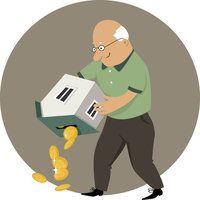Retirement Strategies: Using Your Home for Income, Part I
Reverse mortgages aren't right for everyone, but they're a concept some soon-to-be retirees might want to consider.

If you’re a dentist at or near retirement, chances are that home ownership has been part of your personal and financial picture for some time. This may mean an emotional attachment to your home, or a feeling that the home is too essential a part of your life to be considered an investment.
But the simple truth is that if you own a home, it can be considered as part of your retirement assets, and it may even become an essential source of income for you. Over three parts, we’ll look at two strategies that allow you to use equity in your home as retirement income. First, we’ll examine the potentially confusing topic of reverse mortgages in parts 1 and 2. In part 3, we’ll look at downsizing your mortgage.
What is a reverse mortgage?
A reverse mortgage—also sometimes called a home equity conversion mortgage—is a type of home equity loan generally only appropriate for older homeowners. It does not require monthly mortgage payments. The loan is repaid after the borrower moves out or dies. It is also known as a home equity conversion mortgage, or HECM.
The strategy has only been around since the late 1980s, and at first it was considered only an option of last resort for the truly cash-strapped. But recent years have seen some financial experts changing their tune about the appropriateness of reverse mortgages.
Generally speaking, it is for people who
•
Don’t plan to move anytime soon.
•
Can afford the cost of maintaining their home.
•
Need or want extra income to pay for daily living expenses or for a rainy-day fund.
How It Works
The bank makes payments to the borrower throughout his or her lifetime based on a percentage of the home equity the homeowner has accumulated. The loan balance does not have to be repaid until the borrower dies, sells the home, or permanently moves out. There are no limits on how the money can be used, and any homeowner over the age of 62 who either owns the home outright or has only a small remaining mortgage can be eligible for one.
The amount of a loan you can get depends on your age, the appraised value of the home, any remaining mortgage amount, and current interest rates. Only homes used as primary residences can be used.
One of the most attractive aspects of a reverse mortgage is that the homeowner can never owe more than the value of their home in a reverse mortgage loan, no matter how much is borrowed. But there are some pitfalls to be aware of as well. In Part 2, we’ll look at pros and cons of reverse mortgages.